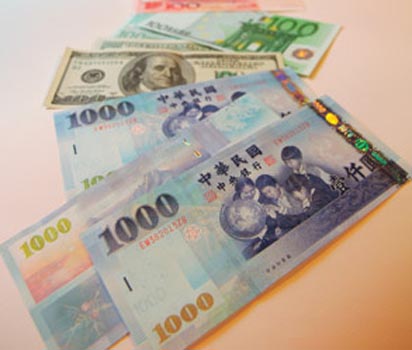Is Asia's electronics sector recovering?
 Bangkok - Among Asia's export-driven economies, the electronics sector, which generally accounts for 30 to 50 per cent of their exports, has offered the most glaring example of the region's economic coupling with the US market.
Bangkok - Among Asia's export-driven economies, the electronics sector, which generally accounts for 30 to 50 per cent of their exports, has offered the most glaring example of the region's economic coupling with the US market.
Not surprisingly, as the US sub-prime crisis hit in September and October last year, orders for Asia's electronics - a broad category of semi-conductor-based components and consumer goods that covers everything from computers to mobile phones - tanked.
"People got caught with a lot of inventory and collapsing demand so the reaction was to stop ordering," CLSA Securities head of research Andrew Stotz said in Bangkok.
New orders stopped, exports fell and Asia-based manufacturers of items like hard-disk drives or semi-conductors were forced to lay off thousands of workers.
After months of declining exports there are signs emerging that the sector has finally bottomed out, although it's too early to talk of recovery.
In Thailand, where electronics accounted for 31.7 billion dollars worth of exports last year, or 27 per cent of the total, exports were below 3 billion dollars in January and February, but rose to 5.2 billion dollars in March, albeit still 32 per cent lower year-on-year.
But last month Western Digital - the world's second-largest manufacturer of hard-disk drives - hired 3,000 additional workers for its Thai-based factories, after laying off as many last year.
Altogether an estimated 20,000-30,000 workers have lost their jobs in the sector since last year, industry sources said.
Taiwan, another economy heavily dependent on electronics exports, is seeing a similar trend.
"In the first quarter, Taiwan electronics firms had rush orders," Oliver Fang, co-head of equity at Fubon Securities said. "In the second quarter, they have received short-term orders. These are good signs, but electronics manufacturers are uncertain if recovery has begun, or if it is only a false start."
Electronics and information technology products account for half of Taiwan's export cash volume, with about 832,000 people working in the electronics and information technology industries.
In Japan, semiconductor output was expected to increase 4.3 per cent in April and 6.1 per cent in May, as firms put the brakes on production cuts.
But the sector has suffered financially, and one worrisome sign for employment is a trend towards mergers.
Japanese chipmakers Renesas Technology Corp and NEC Electronics Corp have agreed to merge their operations by April 2010 to become the nation's largest semiconductor maker and the world's third-largest chipmaker.
In China, the dependency on the electronics sector is substantial.
Last year IT and electronics industry exports were valued at 521.8 billion dollars, or 36.5 per cent of total exports, with electronic components alone accounting for 48.5 billion dollars.
In the Philippines, electronics exports amounted to 28.4 billion dollars in 2008, 57 per cent of the total export bill. The sector employs an estimated 400,000 people.
Electronics exports were down year-on-year 48.4 per cent and 45.0 per cent in January and February, respectively.
Such massive export falls have highlighted the region's over-dependency on the sector and need to upgrade.
"Obviously, there are things the industry needs to do to remain competitive. The industry is trying to move up the value chain. We are putting more effort in research and design and enhancing the skills of our work force," Arthur Young, chairman of the Semiconductors and Electronics Industries in the Philippines Inc, said.
Thus far, fears that multinational firms would relocate all their electronics factories in South-East Asia to China, have proven unfounded.
"Thailand has a large labour force, a pretty good domestic infrastructure and we are alternative investment for those who don't want to put all their eggs in the China basket," Stotz said.
The same holds true of Malaysia, which has attracted investments from major US and Japanese chipmakers and computer-related firms such as Intel, AMD, Dell, NEC, Seagate, Agilent Technologies, Motorola, Sony, Jabil Circuit and Flextronics, mostly operating their plants in the northern state of Penang.
In China, despite drops during the first quarter, new investments in the sector have not dried up completely.
Last week, the world's leading maker of computer chips, Intel Corp, said it would complete a new 2.5-billion-dollar wafer fabrication plant in the north-eastern Chinese city of Dalian as planned next year with a staff increase from 500 to 2,000.
Such signs are encouraging, but much depends on the extent and rate of recovery of the US economy, which few can predict.
"In this sector, people are really afraid to play that global recovery theme because nobody knows," Stotz said.